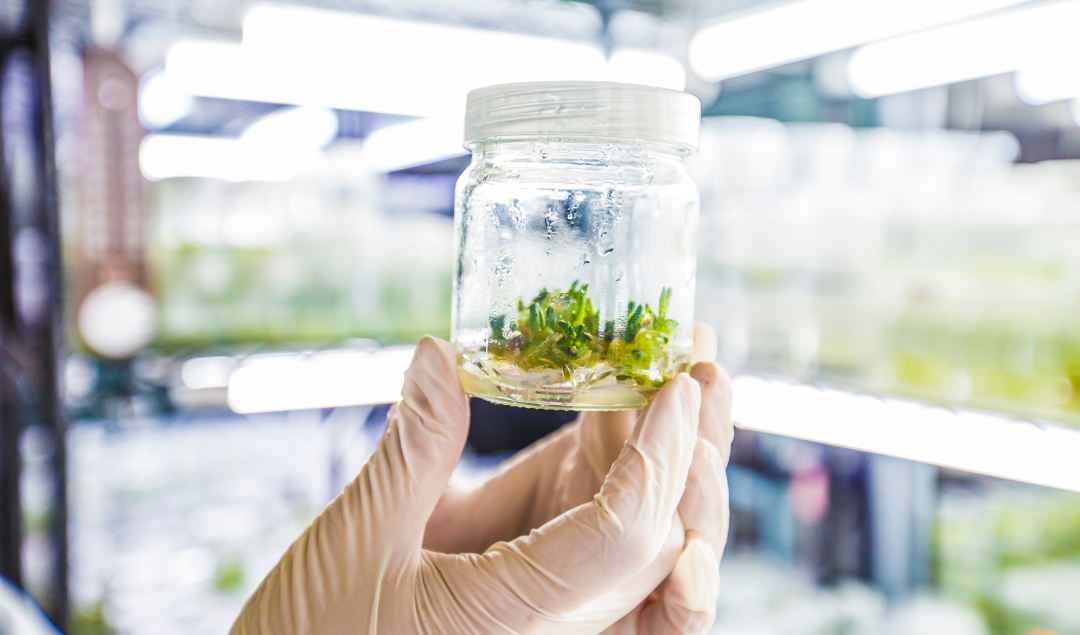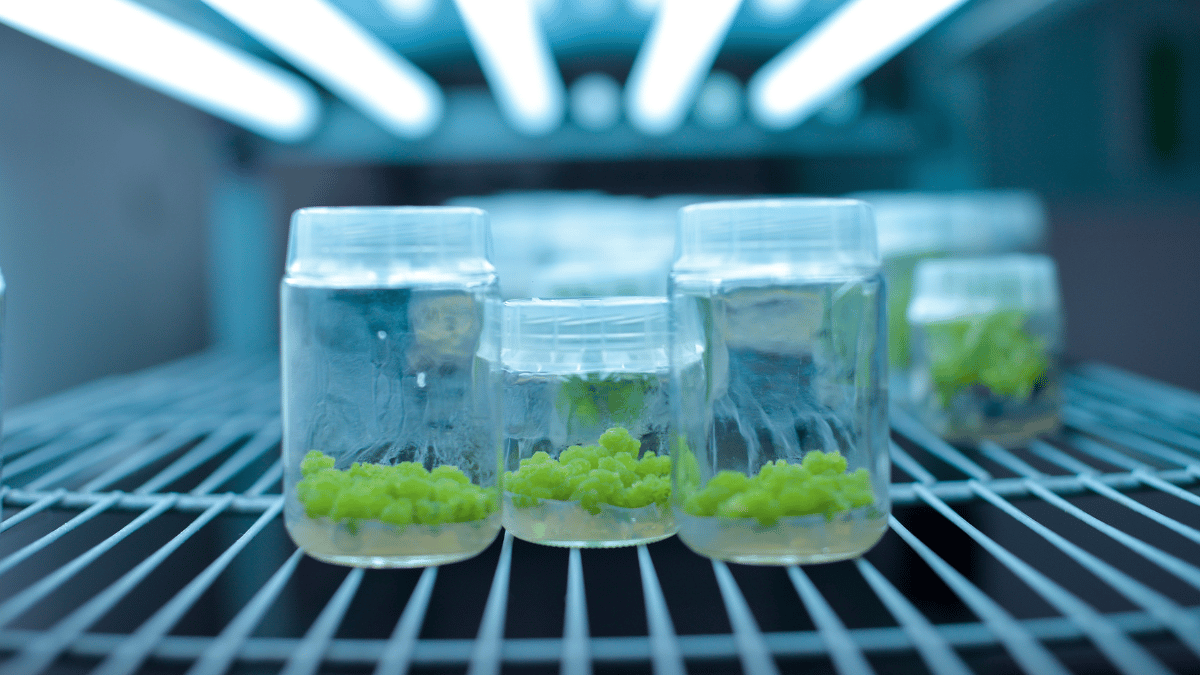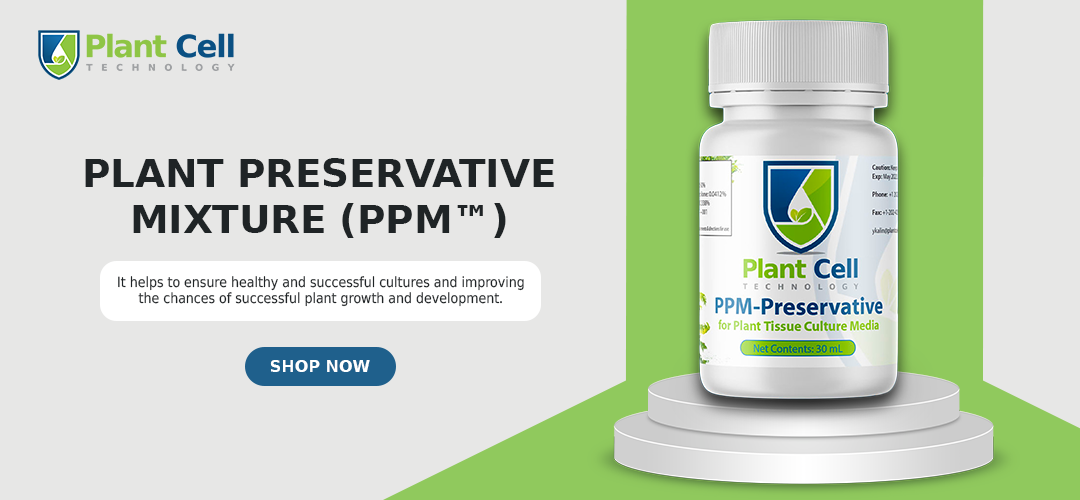
Assessing the Effectiveness of PPM™ in European Beech (Fagus Sylvatica) Tissue Culture

Introduction
Tissue culture requires maintaining sterile conditions at every stage, from initiation to acclimation of plants. Each step demands careful efforts to ensure a completely aseptic environment for the optimal growth of in vitro plants.
Tissue culture consists of the following key stages:
- Initiation Stage: In the Initiation stage, explants, small pieces of plant tissue, are collected and introduced into a culture medium. This stage is foundational, and meticulous care is taken to ensure an aseptic environment. This precaution is important to prevent the invasion of harmful microorganisms such as bacteria, fungi, or viruses, which can detrimentally affect the plant tissue. Contamination at this early stage can lead to the subsequent failure of the culture.
- Multiplication/ Proliferation Stage: During the Multiplication or Proliferation stage, the previously introduced explants begin their growth and multiplication. The aspect to emphasize in this phase is the continuous maintenance of sterility. Any breach of sterility can not only lead to the overwhelming growth of contaminants but also introduce unwanted genetic variations. Such disturbances can significantly mar the overall quality and yield of the cultured plants, leading to undesirable outcomes.
- Subculturing Stage: The Subculturing stage entails the transfer of plant tissue to fresh culture media to further continue its growth. Aseptic techniques are critical during this transfer to circumvent any form of contamination. Even a small amount of contamination at this stage can unleash disruptions, potentially derailing the entire culture process.
- Rooting and Acclimatization Stage: In the Rooting and Acclimatization stage, the grown plantlets may require the development of roots and acclimatization to external conditions. Maintaining aseptic conditions is a continuous necessity to thwart potential infections as the plants make the transition from a controlled laboratory setting to a more natural environment. This step ensures the robustness and viability of the plants as they transition, helping ensure their sustained growth and development in subsequent stages.
- Hardening Off Stage: This stage involves gradually exposing the plants to external conditions to prepare them for transplantation. While strict aseptic conditions may not be as critical as in earlier stages, maintaining cleanliness helps ensure the health of the plants during this transition.
- Transfer to the Field or Greenhouse: After successful tissue culture, plants are transferred to their final growth location. Although not within a laboratory setting, maintaining cleanliness during transplantation helps prevent stress and potential diseases when adapting to the new environment.
Solution To Prevent Contamination and Maintain Aseptic Environment
Contamination poses a significant challenge in tissue culture laboratories, jeopardizing both the integrity of the cultures and resulting in substantial losses of financial resources, energy, and valuable time invested in the procedure.
To mitigate the risk of contamination, tissue culture labs must practice strict aseptic techniques. This includes the use of sterile equipment, gloves, and protective clothing. Additionally, surfaces must be carefully cleaned and disinfected before and after use. Furthermore, all personnel must wash their hands before and after each procedure and all contaminated materials should be disposed of properly.
Other than following best practices, all equipment should be checked regularly for any signs of damage and all staff should be trained in proper safety procedures.
To safeguard against contamination, tissue culture labs often employ specialized chemicals, such as Plant Preservative Mixture (PPM™). In the following section, we present a compelling case study that not only highlights the significance of PPM™ but also showcases its remarkable effectiveness in preventing contamination in the in vitro cultures of Fagus Sylvatica.
PPM™ for Contamination Prevention in Fagus Sylvatica In Vitro Cultures
Sterilizing seeds and buds of European beech can be challenging due to their typically high microbial infestation, and the limited ability of sterilizing agents to penetrate folded cotyledons in embryos and folded leaves in buds.
Until now, sterilization using HgCl2 has been the only option for culturists, which is strongly toxic to humans and considered a mutagenic factor. Researchers also tried the use of antibiotics and fungicides, however, they only seemed to be effective against a certain species of microbes. Further, they decompose during autoclave and can negatively affect in vitro growth of vascular plants.
Enter PPM.
Plant Preservative Mixture is a robust, broad-spectrum formulation developed to prevent the attacks of all kinds of contaminants, including bacteria, fungi, and algae.
PPM™’s Working Mechanism
PPM™ is composed of two isothiazolinones with salts of magnesium. The active compounds within the molecules permeate microbial cells, disrupting critical processes such as the citric acid cycle, the oxidative electron transport chain, and the absorption of monosaccharides and amino acids. Notably, the compound has demonstrated no adverse impact on the vitality or development of plant tissues in the in vitro environment.
Procedure
The effect of PPM™ on the sterility of In vitro cultures of European Beech (Fagus Sylvatica) was studied by Wojciech Kraj and Adam Dolnicki. The study tests PPM™ effects on two explants of the tree
- Entire embryos and their fragments
- Buds from lateral roots of 10-15-year-old beeches
Steps
- Seeds and buds were washed under the tap water for 30 minutes, then transferred to 96% ethanol, fired, and washed in pure and sterile water.
- The embryos were disinfected with a 5% NaOCl solution containing a few drops of Tween 80 for 20 minutes followed by washing three times using sterile water.
- For buds, their scales or leaf primordia are removed followed by cutting and disinfecting them for 10 minutes using 5% NaOCl for 10 minutes.
- Explants were put into separate test tubes containing 10ml WPM culture media supplemented with 6 g/L agar, 30 g/L sucrose, 200 mg/L glutamine, 200 mg/L casein hydrolysate, 0.63 mg/L BAP, and 11.1 mg/L 2, 4-D.
- The cultures were kept in a dark chamber at a temperature of 23 ℃ for 30 days.
- PPM™ was added to the media before autoclaving.
- PPM™'s influence on the culture media was determined based on the percentage of explants without any sign of microbe development for 30 growth days.
- Further, the vitality of cultures was determined by the appearance of callus on explants.
Experiment Table 1

Experiment Table 2

Results Obtained
The study found that the explants cultured on a solid WPM media supplemented with as much as only 2 ml/L of PPM™ are the most effective approach to obtaining sterile cultures (around 70-75%).
The researchers noted, “the presence of PPM™ in the growing medium, allowed, as it seems, for a constant penetration of the substance in the microbes”.
Further, no negative influence of PPM™ was observed on the vitality of explants in the concentration used in the study. Additionally, the obtained callus was round and found to be growing at a comparable rate to the control.
PPM™ (Plant Preservative Mixture™): Keeping Cultures Safe and Clean
Currently, PPM™ stands out as the only available solution effectively combating a wide range of contaminants. It can also be sterilized alongside the media without any risk of decomposition. Numerous studies have validated the effectiveness of our recommended concentration, which is 1-2 ml of PPM™ per liter of the media, to obtain clean and safe cultures.
If you are striving to enhance your lab's efficiency, increase plant yield, and grow your plant business's revenue, PPM™ can serve as a reliable ally in achieving these goals.
Besides PPM™, the Plant Cell Technology Store offers a variety of tissue culture chemicals and equipment at cost-effective prices to meet your tissue culture requirements. Check them all out here!
Blog Categories
View by Level
Popular Blogs

Callus Culture: Definition and Applications
Introduction Tissue culture is not just one technique! Yes, you heard right! As you know, tissue culture is an advanced...
Read More
6 Plant Tissue Culture Books to Keep Learning
Introduction Most of us are fans of books when it comes to learning a topic in detail and in a...
Read MoreSubscribe to Our Newsletter









Join the conversation
Your email address will not be published. Required fields are marked